https://www.youtube.com/watch?v=q9YKQQo9zeI
Make ALL your portraits better by practicing THIS STEP...
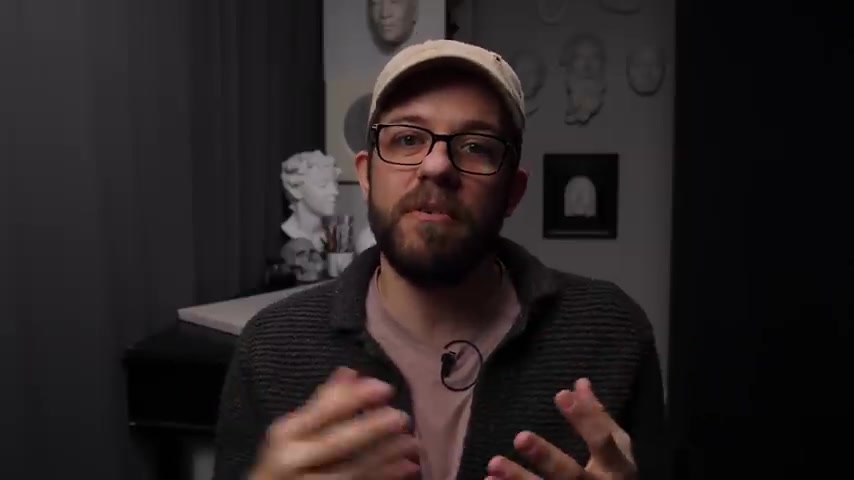
In this video , I'm gonna tell you all the stuff that I've figured out over the years about using block ins as an effective method to get accurate proportions , to get a good sense of construction and to really build the foundation for your drawing .
Moving forward .
I think that for drawing students , whether you're beginning intermediate or advanced , it's one of the most important things that you can practice .
And this is my take on it .
By the way , if you do want to learn about my techniques of drawing and painting and all the lessons that I put out , it's all on Patreon , there's a link in the description of this video .
And if you go there for like 10 bucks or whatever you get hundreds of hours of tuition , I could synopsis a block in by saying that it is a simple expression of the subject that is generally reserved for the first stage of the drawing , right ?
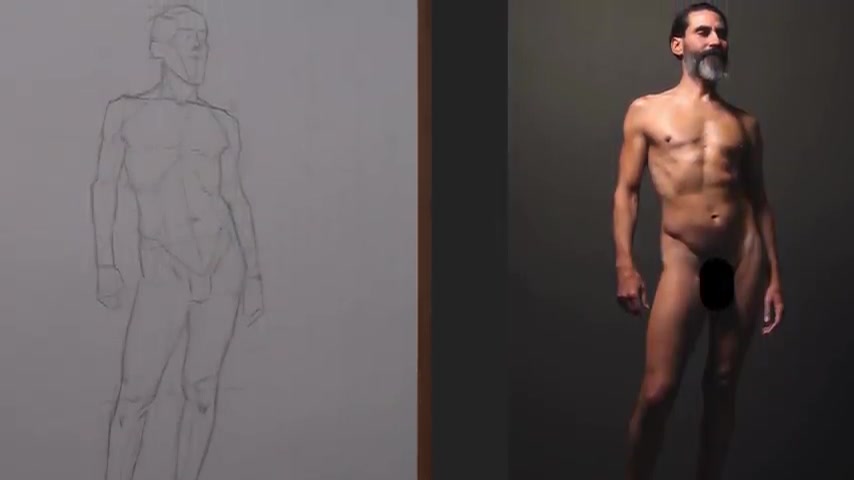
So it's the first things that you get on to the paper , the first place that you kind of map out your proportions , your sense of design , maybe the composition is included quite well inside the block in and it's everything up until I think you start to develop values as soon as you advance into half tone values and transitions and working with space and depth and atmosphere and form these things are not inside the block in world .
The phrase that I like to keep in mind when I'm making a block in is that I'm trying to make the simplest possible expression of the subject .
Now , there are two criteria in that statement and both are equally important , right ?
We want to simplify the subjects .
We want to take away as much visual information as possible .
But at the same time , we to respect the fact that our drawing needs to be comparable to the subject .
We need to be able to look from our drawing to the subject , make a comparison and try to fix whatever errors we find .
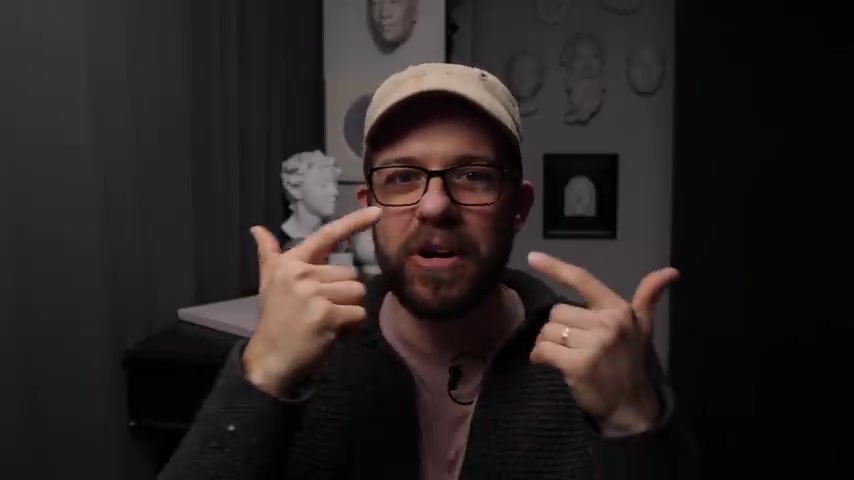
So if we over simplify right , we will fail to express the subject , which is to say if you are blocking a portrait of me right now , and you just drew a box around my head to show the height proportion and the width proportion .
This would be a simplification of me .
But it would be an over simplification in that you really couldn't compare a rectangle to my face and say that you can recognize the differences with your eye .
The polar other end of the spectrum would be that you start out with all the little reflections inside my iris and my tear ducts and so on and my eyelashes and just build out from there .
There you are expressing the subject for sure you're really getting into and dialing into exactly what the subject is all about , but you're really failing to simplify right now .
Why is a block in important ?
Why are simplifications , important simplifications are important because they help your drawing be flexible .
Now , every art teacher in the world knows that a drawing is not usually going to get too much better than what the block in allows it to do .
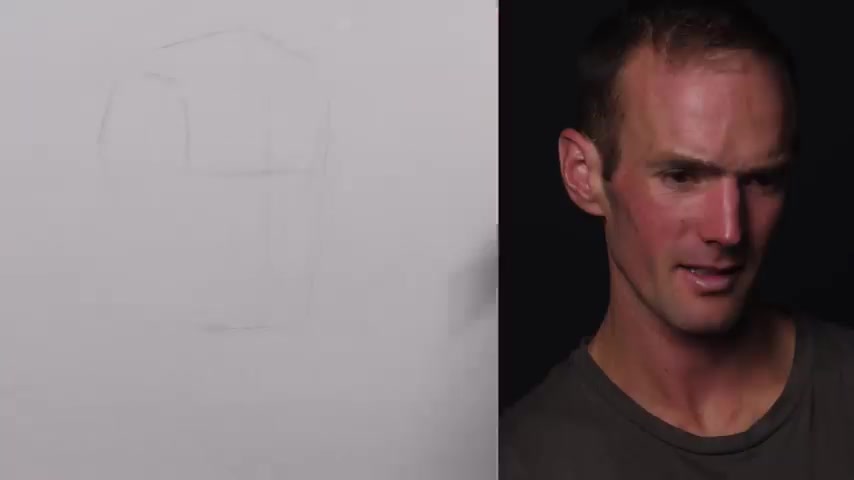
And what we mean by this is that the block in is meant to solve your proportions .
It's meant to solve a little bit of your construction .
Um If for instance , you're working with a nude figure , but even with a portrait for that matter , it's supposed to solve the gesture , um it's supposed to be the foundation upon which all of the other really beautiful stuff that you do kind of balances .
And if that foundation is poor , right , you're gonna have this really beautifully rendered drawing that in fact , uh seems like it's made out of bubble gum or essentially is , is not really well constituted in the way that the subject is within the block in stage .
We can say that there are many different phases of it .
The first goal that we have in a block in is to determine two things .
One we want to determine the composition and two , we want to determine the proportion , right .
So the composition essentially , if we're talking about a portrait is just where is the portrait or where is the head within the boundaries of the canvas or paper , this is something that you need to be very flexible in , you know .
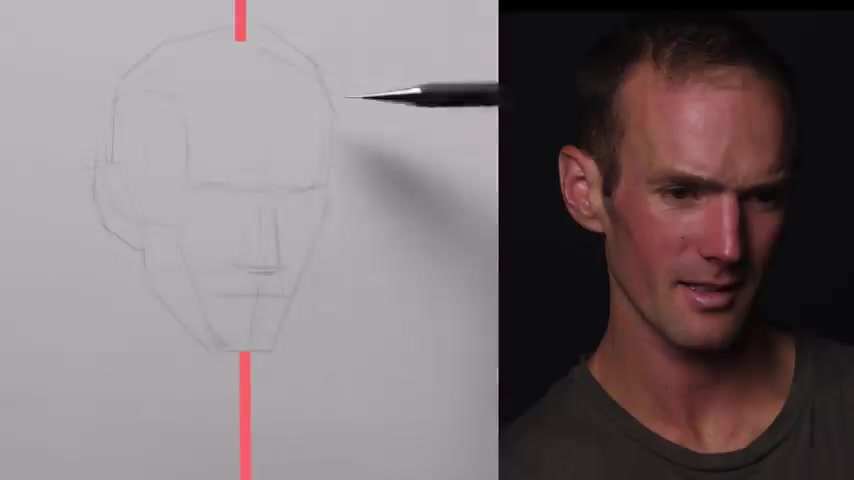
So starting out with the simplest expression , you can maybe a top and a bottom of the head , a couple of sides to the head , maybe a couple of angles at either side .
And with that symbolic representation of the head , you can place it within the canvas and judge the distances for instance , from the top of the head to the top of the canvas .
If you place it too high , your model is going to look cramped .
If you place it too low , your model is going to look too short .
If you place it too far to the side , then your model is going to look like they are nervously trying to escape the picture plane .
These are all things that you can solve within the first couple of minutes of actually approaching your drawing with just five or six lines on the paper .
After that , we try to then move into something a little bit less symbolic .
Now by symbolic , I simply mean very abstract , right ?
Um You know , my my head does not look like it has six lines around it , but you can use those six lines who symbolically represent my head .
After that , we want to move into a slightly more three dimensional world .
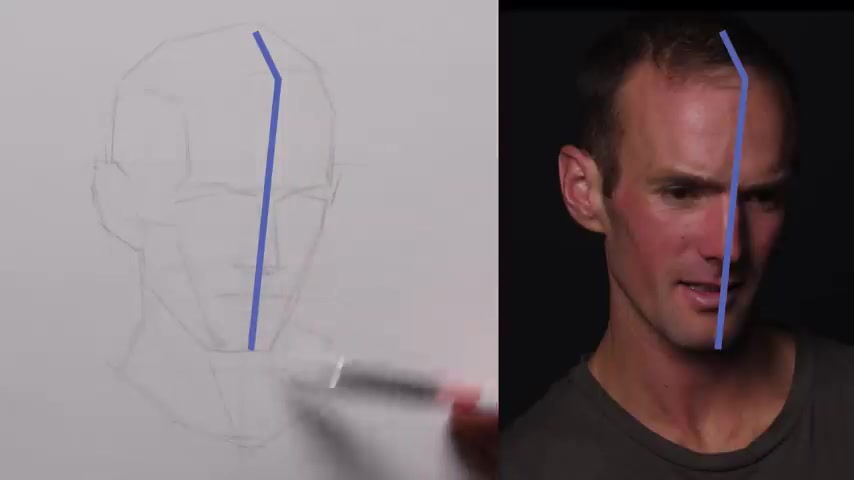
I'm going to start to integrate the vertical center line , right , which is a kind of constructive concept that if we draw a kind of line down the center of the face , our faces will be or our heads will be symmetrical on either side of that .
And so we introduce that idea of structural symmetry and also the three dimensionality of the head .
After that , we get into breaking down some of the key symmetrical features , we get into the cheekbones , the outside corners of the mouth , the wing cartilage on the nose , on either side , basically anything that's a pretty major angle break or major form on the face we want to represent that .
Now , there's a dozen different ways to kind of get into this face .
I have my own idiosyncratic process that I've developed over all these years .
And I've also put together different workshops and lectures about it as well .
One that you're probably familiar with is the Luis head .
Right now , the Luis head is something that probably fits pretty nicely inside this moment of the drawing .
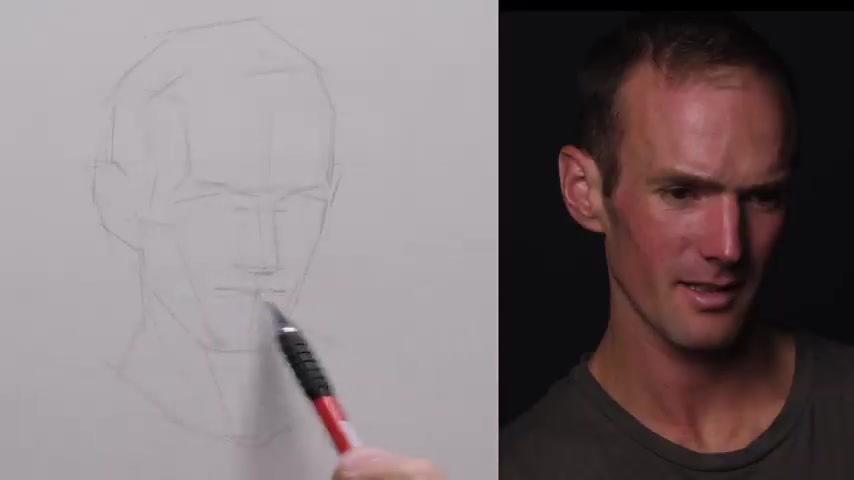
Once you've decided where the head should be on the canvas and generally what the size of the head is , you need to develop a head structure template .
Right now , we're probably 15 minutes into the drawing by now that we have some generic three dimensional head structure template on the paper .
After that , we can start to elaborate a little bit on the positioning of the features .
So by now , maybe we're 30 minutes in now , it seems like we have probably done a whole lot within those 30 minutes .
But I would say that the next phase that is actually really , really important is to double triple and quadruple check all of the stuff that you thought you had laid into exactly the right places .
So we want to fix the orientation of the features and the overall structure of the head as much as possible in this phase .
Why ?
Because at this point , the drawing is super flexible , it couldn't be , it will never be more flexible than it is right now .
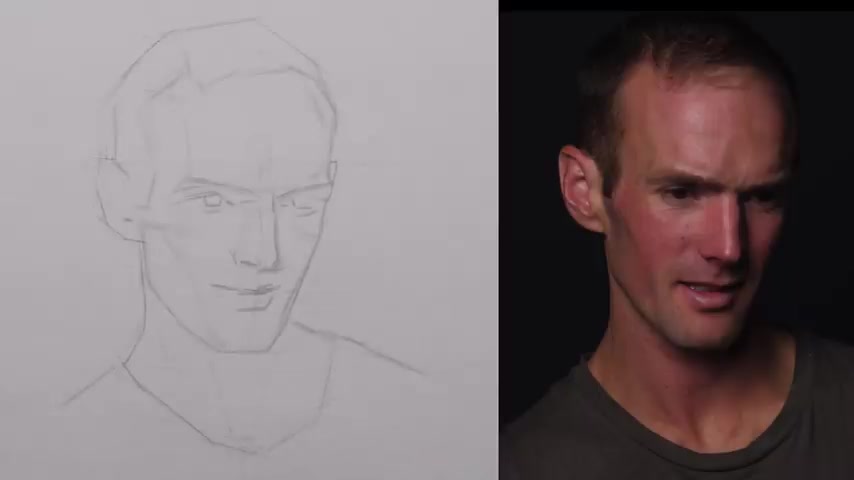
Because all we have is maybe 2025 lines on the paper , there's no values developed , there's no depth , there's no personality in it .
All it is is just a structural template and that gives us so much freedom and that freedom is incredibly important .
If we going to be in the later stages of our drawing , really confident about the placement of all those features because when I'm modeling the fine forms along the edge of the nose and trying to get up to that highlight , I don't want to be doing that in the wrong position within the face .
That's what our blocking is supposed to solve .
It's supposed to give us a clear template that gives us confidence , moving forward in the drawing towards the end of the block .
In phase , we kind of take a hard shift from being totally abstract , which is to say line is abstract .
It doesn't really exist visually .
It's something that we use as a tool to kind of help us negotiate really complicated subjects .
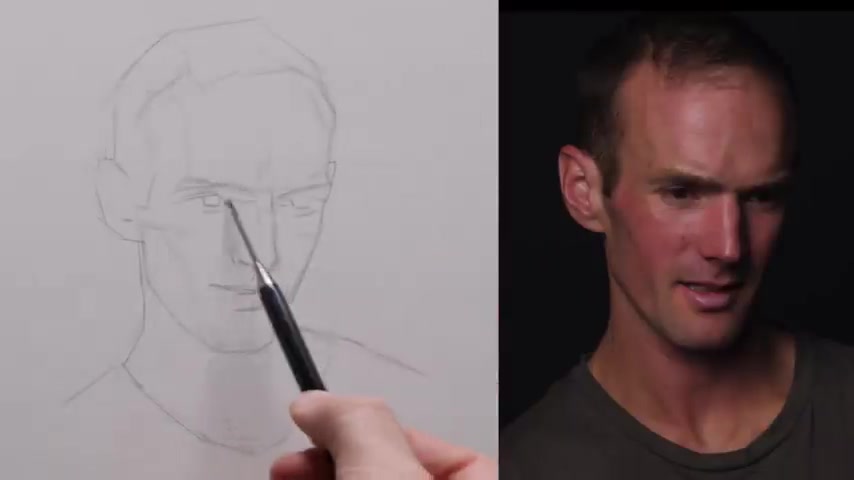
But we shift from using purely line into using a very simple version of value expression , right ?
Basically , what we look for is where the major shadow shape fit into the picture .
It's at this point , we're in this kind of estuary in our drawing .
And that estuary is in between being totally flat and abstract , right , and linear and something that then has a visual presentation , right ?
Something that if we squinted down , it would kind of look a little bit natural , it would look real in a sense .
Now , we're not going to go so far as to get into transitions and half tones because that's way beyond the limit of what a block in requires .
But we're basically going to create this really posterized dichotomy between light shape and shadow shape .
That will probably be the final moment of the block in phase .
Anything beyond that , we get past the block in anything before that .
And we probably haven't given ourselves the best opportunity to recognize all of the errors .

The reason that adding a shadow shape , light shape dichotomy is really useful to you is based on a premise that I found to be relatively true in my experience .
And it's this , the more your drawing appears to be like your subject , the easier it's going to be for you to pick out the differences in between the two .
Now , I've used various visual representations to show what this is .
But essentially this is playing on your capacity to naively recognize differences , especially in faces , right ?
So if you see this video of me today , right ?
And I look how I look .
And then the following day , you saw another video of me in which my nose was like an inch longer than it is today .
I promise you that you would actually recognize that immediately .
This is because you have a memory for the appearances of things .
You have a visual , a naive visual memory of how stuff looks .
And when things are different , we can pick that out .
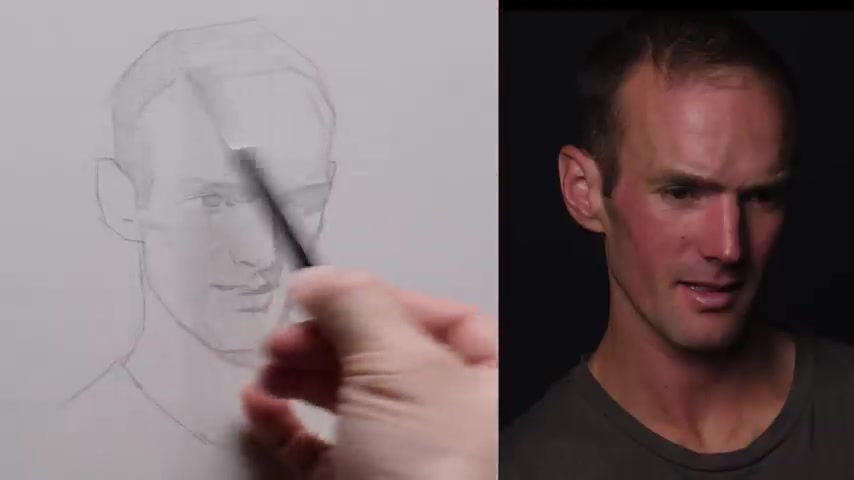
And this is in a way , something that is quite fundamental to drawing and painting just being able compare .
Now , if our drawing looks nothing like our subject , we lose the capacity to use that naive recognition .
And so adding in this shadow shape bridges the gap between a drawing that is a little bit conceptual , a little bit abstract and something that's slightly more realistic , that allows our naive sense of recognition to engage what you're going to do .
Blocking these shadow shapes is to make a single flat unified value .
That value is going to be relatively light .
When I'm working in graphite , usually I'm going to fill in the flat shadow shape with maybe an H maybe an HB I might give it a little bit of stumping just to get the value slightly more .
Even on the paper that flat value inside the shadow that is relatively light combined with a little bit of edge control along the boundary of the shadow where it meets the light shape .
I might make it a little bit softer or a little bit harder in other places .
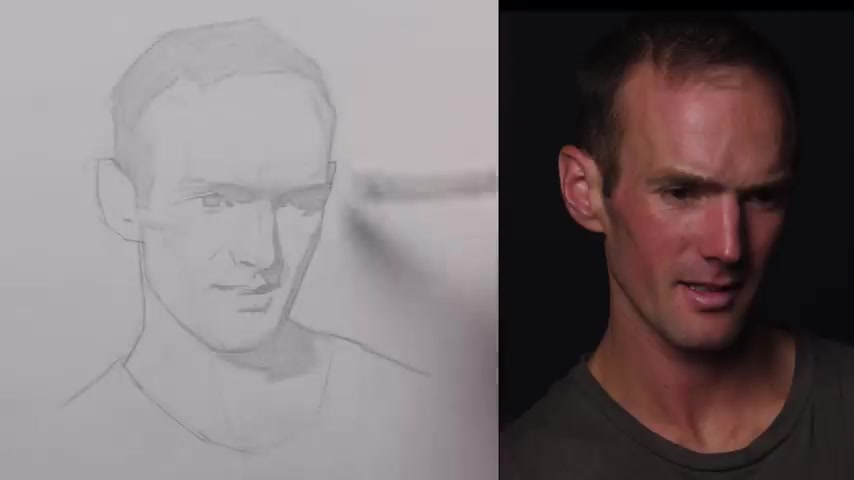
That is the extent to which we're going to define the shadow fully .
It's never going to become like a rendered shadow .
That's not what this phase is about .
It's about a very simple expression of the shadow and light relationship .
If you want to start learning portraiture , the right way , the best thing that you can do is introduce yourself to practicing this phase block ins are a lot like going to the gym .
You need to do a lot of them , you need to do it consistently and you need to have a routine when you do , I tend to like to recommend maybe an hour , maybe two hours of drawing on a block in , I think for students just starting out .
In fact , these are the far more important drawings that you'll do in your education .
Now , I think we all like to make these really well developed highly refined drawings that take 18 , 2050 hours .
That's great .
And I actually think that exercise is wonderful to have alongside of a rigorous routine of practicing your block ins .

The reason being is that when I started making recommendations to students about how I felt it was most efficient to practice .
It dawned upon me very fast that if a student is recommended to do highly elaborate drawings that take a really long time to complete that they only ever get to make one block in per drawing .
And so that part of the drawing process , which is so important and that we really need to practice .
And that we understand is the foundation that our drawing is built upon .
And our drawing will never really get better than what that is .
If we're only practicing that one time per 30 hour drawing , I think that we're missing a lot of opportunity to grow more and faster .
So if you want to accelerate your progress as a drawing student , this rapid practice of block ins , I also think it's probably one of the best ways that you can spend your time .
Thank you everybody so much for watching this video and spending some time with me .
If you like the content on this channel , please remember to like and subscribe .
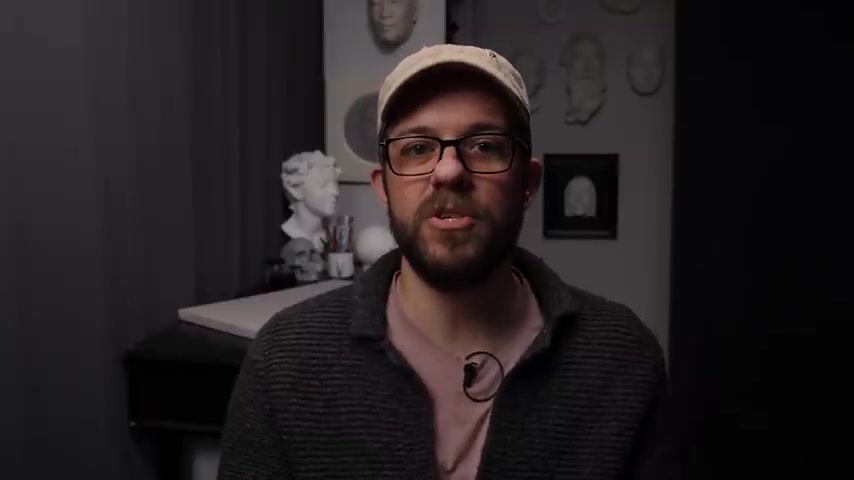
If you do want to learn more about drawing and painting and portraiture in specific , there's a link that's gonna pop up in just a second that will take you to my Patreon page where you can subscribe for just $10 and get tons and tons of video lessons that I've made
Are you looking for a way to reach a wider audience and get more views on your videos?
Our innovative video to text transcribing service can help you do just that.
We provide accurate transcriptions of your videos along with visual content that will help you attract new viewers and keep them engaged. Plus, our data analytics and ad campaign tools can help you monetize your content and maximize your revenue.
Let's partner up and take your video content to the next level!
Contact us today to learn more.